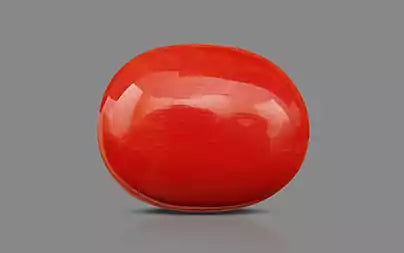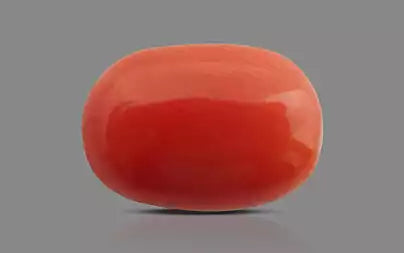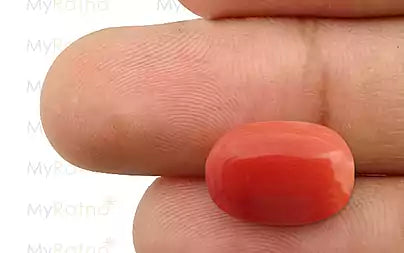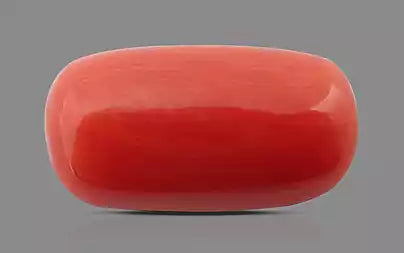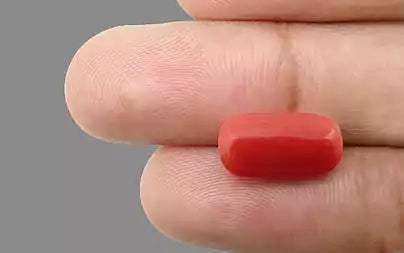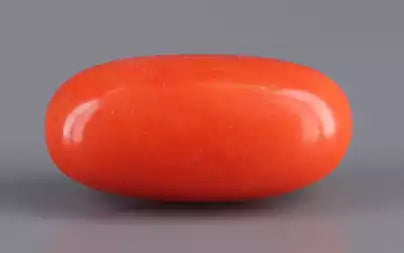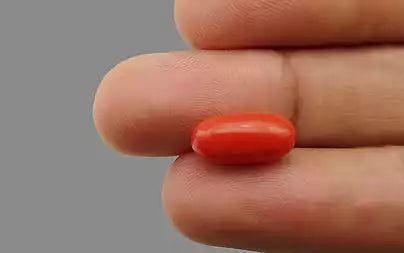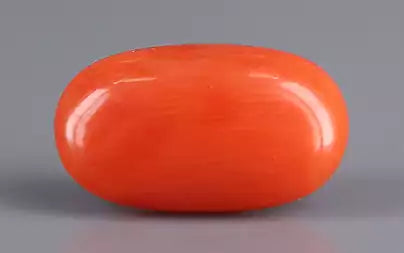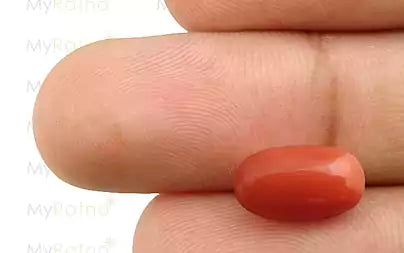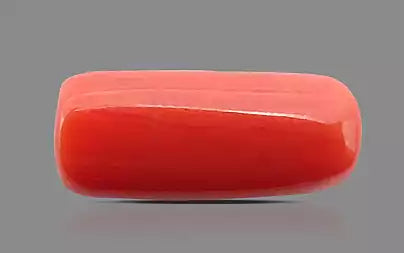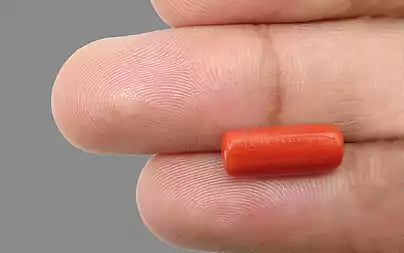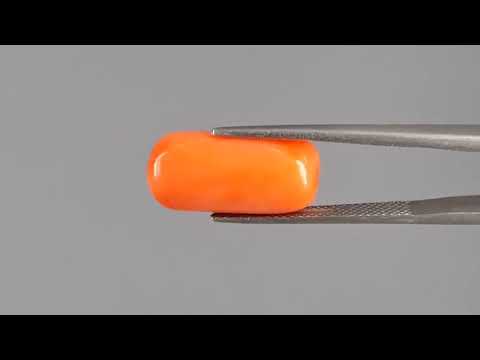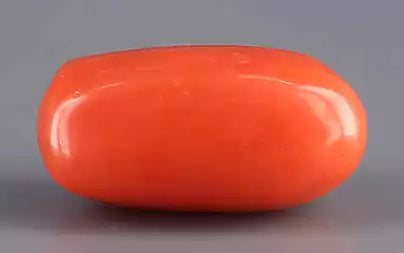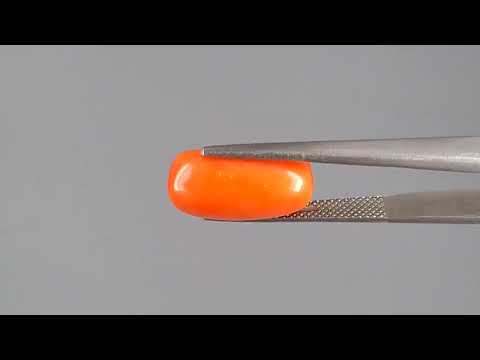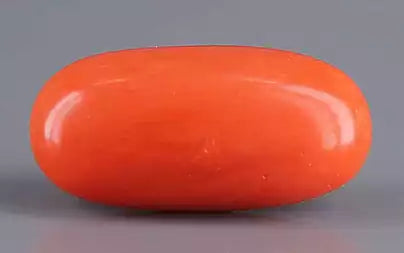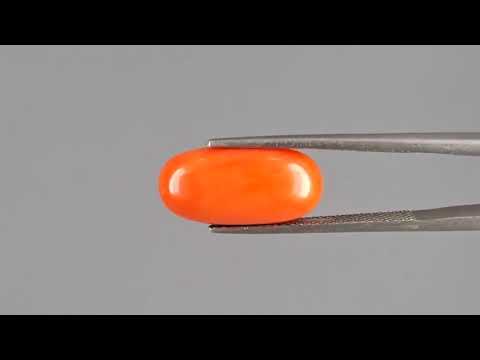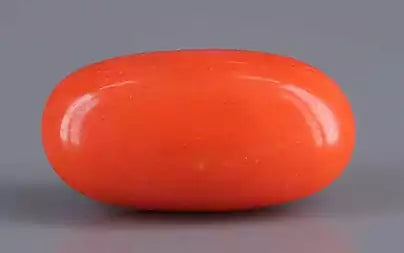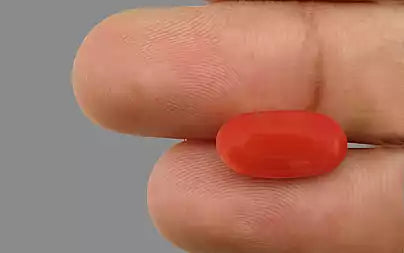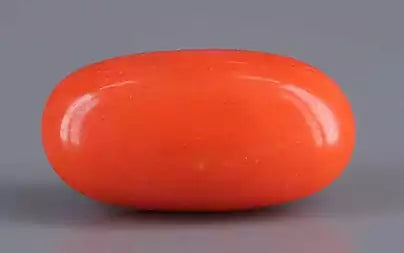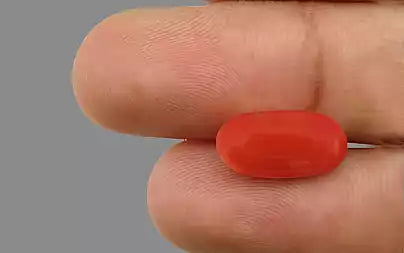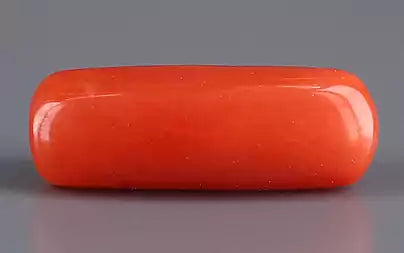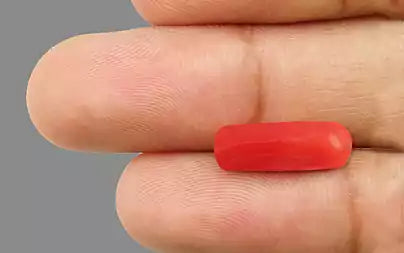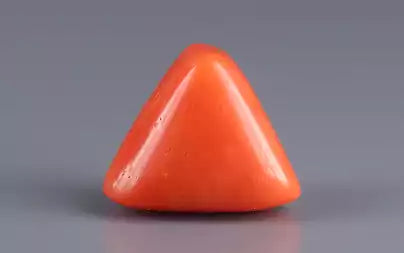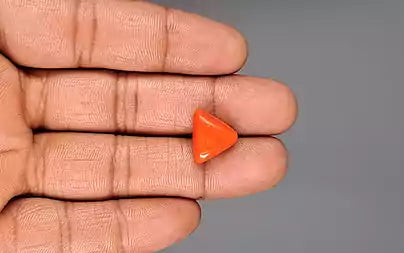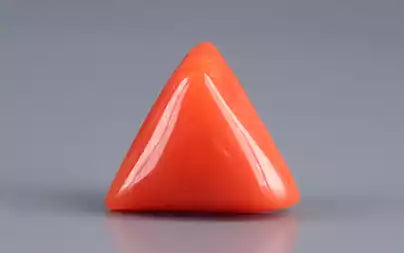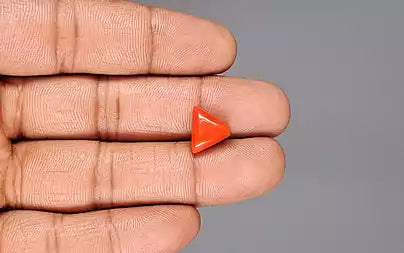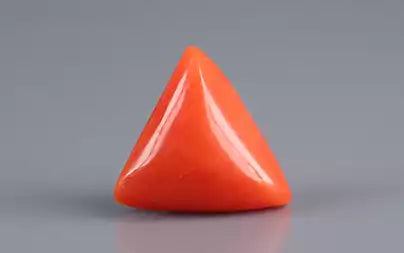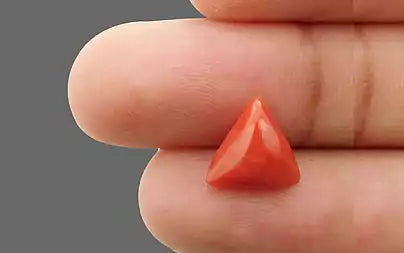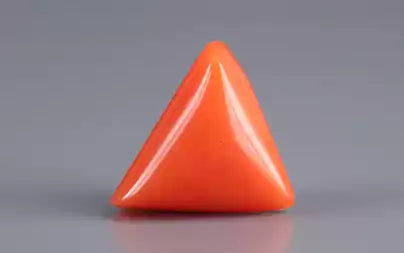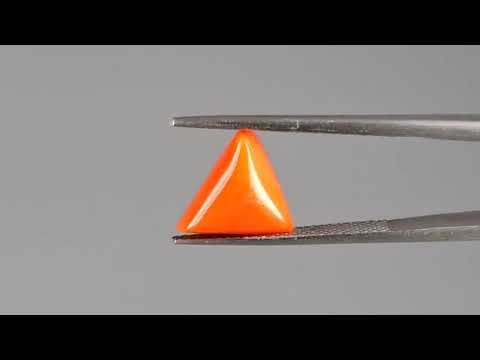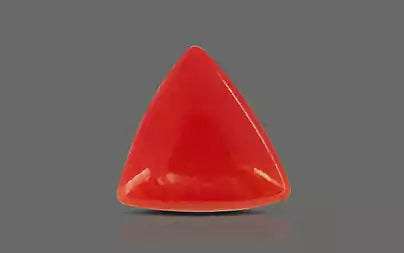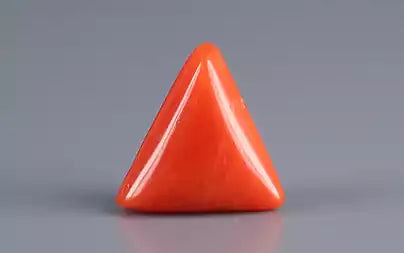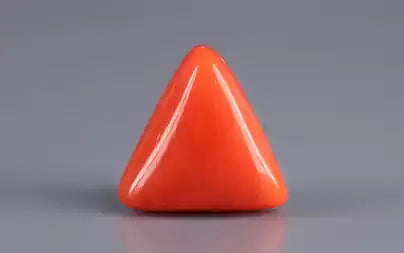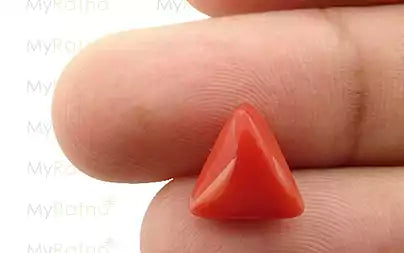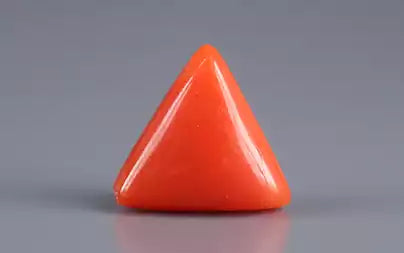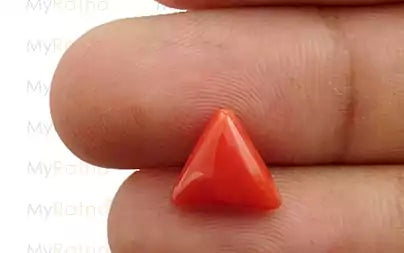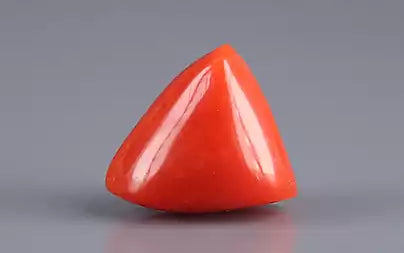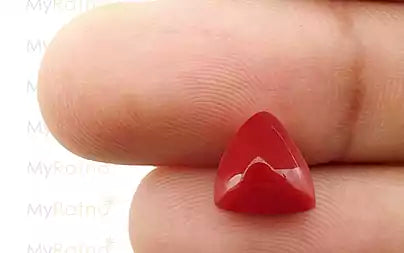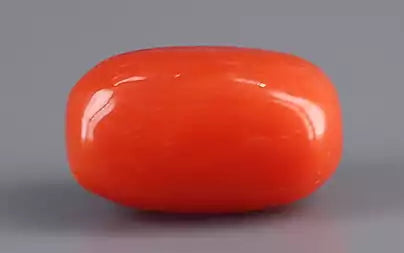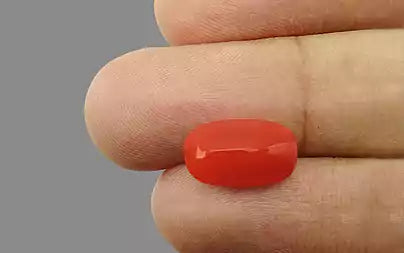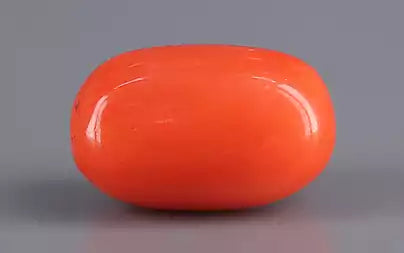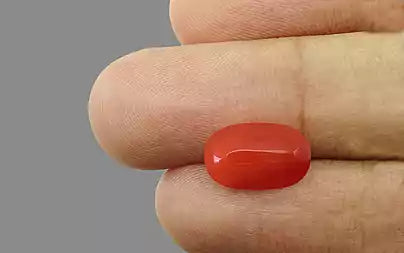Red Coral (Moonga) Collection
About Red Coral Stone
Red Coral, also known as Moonga (मूंगा) in Hindi and Praval ratna in Sanskrit, is a rare and powerful gemstone that forms naturally in depths of the ocean. It is created by the skeletons of marine organisms called coral polyps. Over time, these structures harden and become the bright red gemstone admired for both its beauty and astrological power.
Moonga is closely associated with planet Mars (Mangal) in Vedic astrology. Mars represents strength, courage and energy and Lal Moonga is believed to enhance these qualities in wearer. Those who struggle with low energy, fear or indecisiveness are often advised to wear a moonga gemstone to gain boldness, confidence and stability.
Depending on its origin, Red coral stone is classified into different types. Japanese Coral is sourced from waters around Japan On the other hand, Mediterranean Coral is harvested from the Mediterranean Sea and is equally valued in gemstone world. In South India, coral stone is also popularly called Pagadam stone, and then there are italian corals are as well.
Red Coral is normally worn as rings, pendants, or other forms of red coral jewelry. It is considered not just a gem but a source of strength, vitality and protection from negative energies. Due to its natural origin and rising demand, munga ratna price may vary based on clarity, shape and geographic source.
Who Should Wear Moonga Stone
Moonga stone is closely connected to planet Mars (Mangal) in Vedic astrology. This powerful gemstone is perfect for individuals who need strength, courage and stability in their lives. It is especially recommended for those whose birth charts show a weak or malefic Mars, or who are experiencing Mangal Dosh.
- Aries and Scorpio zodiac signs benefit the most from wearing original red coral stone, as Mars is their ruling planet. It helps enhance their natural confidence, willpower and decision making skills. People with Aries or Scorpio ascendants may notice improvements in focus, leadership qualities and personal energy levels after wearing this vibrant gemstone.
- Individuals facing mangal dosh a challenging planetary alignment of Mars. can wear laal moonga to bring emotional balance, remove aggression and stabilize relationships. This gemstone is also helpful for those dealing with fear, hesitation, or a lack of motivation in life.
- Professionals working in high-energy fields such as military, police, athletics, engineering or business leadership may find pagadam especially beneficial. It enhances physical stamina, assertiveness and mental focus, making it an ideal support for those in roles that demand strength and quick decisions.
- Pavalam stone is also advised for individuals suffering from health concerns linked to blood pressure, low immunity, or bone weakness. It is believed to support vitality, improve circulation, and boost the body's natural defenses. In relationships, it is said to spark passion and resolve conflicts, strengthening emotional bonds.
How to Wear Red Coral Gemstone
Wearing a red probal stone the right way is important to get its full astrological benefits. Since it is linked to Mars. Proper wearing practices can help channel its positive energy effectively. Below are the key steps and tips to follow:
1. Choose Right Carat Weight: Recommended weight of Moonga stone is typically 4 to 8 carats. Weight should be around 1/12th of your body weight. For example, if your body weight is 60 kg a 5 to 6 carat red coral gemstone would be suitable. Always consult an experienced astrologer to know right weight for you.
2. Best Metal: Red Coral is most effective when set in gold or copper. These metals align well with Mars' fiery nature and help activate the energy of gemstone.
3. Best Day and Time to Wear: Tuesday is considered the most auspicious day to wear Lal munga gemstone. It should ideally be worn during morning hours, preferably within Hora of Mars (Mangal), after sunrise.
4. Which Finger to Wear It On: Wear povala ratna on ring finger of your right hand or working hand for best results. This finger is traditionally ruled by the Sun and wearing Moonga here helps balance power and confidence.
5. Purification Process: Before wearing munga ratna, purify it by soaking it in a mixture of raw milk, holy water (Ganga Jal), and honey for a few minutes. Alternatively, you can cleanse it by placing it in clean water with a pinch of rock salt or by exposing it to sunlight for a few hours.
6. Chanting Mars Mantra: To activate moonga stone’s energy. Chant the Mars mantra “Om Mangalaya Namaha” 108 times while wearing the ring. This ritual helps invoke Mars' blessings and aligns red coral gemstone with your personal energy.
It is always wise to consult an experienced astrologer before wearing Raktha Prabal, as Mars affects everyone differently.
Benefits of Wearing Moonga Gemstone
Moonga, also known as Red Coral, is a gemstone formed from skeletons of marine coral polyps. Its associated with the planet Mars (mangal grah) in vedic astrology. Wearing a natural munga ratan can bring positive transformation in many areas of life.
Boosts Courage and Self-Confidence
One of most known red coral stone benefits is its ability to increase willpower and inner strength. It helps the wearer overcome fear, hesitation, and self-doubt. By energizing Mars in your birth chart, Moonga gives you the courage to face difficulties and take bold steps in life.
Improves Physical Vitality and Health
Red Coral is traditionally believed to support healthy blood circulation, boost immunity, and aid in bone and muscle strength. People dealing with low energy, skin problems, or chronic weakness may benefit from wearing Pagadam stone regularly.
Helps Balance Emotions and Anger
Those dealing with irritability, mood swings, or anxiety often find peace through Lal Munga. Its grounding energy calms emotional storms and helps reduce impulsive reactions, promoting inner peace and mental clarity.
Increases Energy and Motivation
Mars is the planet of energy, action, and drive. Wearing marjan stone can boost your motivation, ambition, and productivity. It’s ideal for people who feel mentally or physically drained and need that extra push to stay active and goal-focused.
Supports Careers in High-Energy Fields
For people in competitive careers like business, sports, military, or leadership roles, Red Coral brings determination, stamina, and clear focus. It sharpens your ability to take fast decisions and lead with strength.
Enhances Relationships and Passion
The warm energy of Red Coral jewelry is believed to rekindle passion in love and marriage. It promotes harmony, emotional bonding, and better communication. For those facing conflicts in their personal lives, Rakta prabal brings calm and balance.
Aids in Spiritual Growth and Root Chakra Healing
Spiritually, Red Coral connects to the root chakra, keeping you grounded and focused. It enhances stability, inner strength, and deepens your meditation practices. Ideal for those on a spiritual journey, this stone helps remove fear and create balance within.
Offers Protection and Stability
One of the most ancient uses of moonga ratna is protection. It is said to shield the wearer from evil influences, accidents, and harmful thoughts. By wearing it, many people experience a strong sense of safety, stability, and emotional security.
Details of Moonga Stone Prices
The red coral stone price in india can vary widely depending on several quality factors. On average original moonga stone price per carat starts from INR 1,000 and can go up to INR 8,000 or more.
Among most sought after varieties. Japanese Red Coral price is highest, often ranging between NR 5,000 to INR 30,000 per carat due to its rare deep red hue and fine texture. On the other hand, price of italian moonga stone generally starts from Rs. 1,500 and can go up to Rs. 18,000 per carat.
Factors Affecting Red Coral Stone Price
Price of red coral or munga ratna stone is influenced by various key factors that determine its value, quality and authenticity. Understanding these factors can help you make smart and informed purchase.
- Origin: Italy is globally recognized for producing some of finest red coral gemstones. Its consistent quality has made it a reliable source for centuries. and japanese red coral is rarer and more expensive due to its deep, ox-blood red color and smoother surface. Other notable origins include Algeria, Taiwan, and parts of USA, but Italian and Japanese corals remain most preferred in gemstone market.
- Color: Most desirable red coral stones show a bright, vivid red hue. Pale or dull corals are generally less valuable. The rare "ox-blood" color, with its deep red tone, is considered finest. Munga ratan price per carat rises significantly with deeper, richer shades that display uniform color throughout.
- Clarity: Moonga stones are evaluated based on surface smoothness, texture and absence of blemishes. Best natural red corals are free from black spots, pits or cracks. A smooth and lustrous surface increases both visual appeal and overall value of gemstone.
- Cut and Shape: Since pavizham stone is organic and soft, it is typically cut as cabochons. Common shapes include round, oval, capsule and triangular. Among these, round and well-formed oval stones are costlier than capsules or irregular shapes. A good cut enhances munga ratna's shine and helps preserve its integrity.
- Carat Weight: Bigger red coral stones are rarer and more expensive. However, price does not increase linearly with weight. A small but flawless coral can sometimes cost more than a larger one with visible flaws. Always balance carat weight with quality when choosing your moonga gemstone.
- Treatment: Many low cost moonga stones are dyed or made of plastic, wood or polymer. These artificial substitutes lack both astrological benefits and market value. Always choose original red coral stones that are untreated and natural to ensure effectiveness and resale value.
- Certification: Certified Moonga stones offer guaranteed authenticity and better buyer confidence. Look for certifications from reputed gemological labs like GIA, IGI, or GRS. Certified stones provide clear information about their origin, treatment status, and physical quality, ensuring you're investing in a genuine red coral gemstone.
Types of Moonga Stones
Red Coral, known as lal munga, comes in various natural shades and qualities based on its origin. Before you buy, its helpful to know popular red coral gemstone types available in market.
1. Mediterranean Coral
Mediterranean variety is sourced from the warm coastal waters of Italy, Spain, Greece, Morocco and Croatia. Scientifically named Corallium Rubrum, this type of coral is known for its smooth texture and naturally vibrant shades ranging from light pinkish-red to deep ox-blood red. The branches typically show a consistent color without white patches, making it top choice for those seeking beauty and astrological benefits.
2. Japanese Red Coral
Sourced from deep Pacific waters around japan commonly knows as japanese red coral comes from species like Corallium Japonicum and Corallium Elatius. It is known for its premium quality, intense red tone, and high density. Surface of japanese red coral is smooth, glossy, and shows a uniform color, often considered the rarest and most luxurious type of moonga in the market.
Care & Cleaning of Red Coral Gemstone
Red Coral (Moonga) is a soft and porous gemstone that requires gentle care to maintain its shine and astrological strength. To keep it in good condition:
Wipe the stone with a soft, damp cloth after use and pat it dry with a lint-free cloth. For carved designs, use a soft toothbrush to gently clean dirt from corners. Avoid harsh chemicals, ultrasonic cleaners, or abrasive materials, as they can damage the surface.
Store your Red Coral gemstone separately in a soft, velvet-lined box to prevent scratches from harder stones. Regular, gentle care will help retain both its beauty and effectiveness over time.
Buyer Beware of Red Coral (Moonga)
When buying a certified moonga stone online or offline. Its important to stay alert. Gemstone market is full of imitations, treated corals and misleading pricing. If you are looking to purchase original red coral especially for astrological use then keep following warnings in mind to avoid being misled by synthetic or low grade substitutes.
1. Avoid Dyed and Imitation Corals
Many sellers offer coral that has been dyed or artificially enhanced to resemble genuine moonga gemstone. These fake mungas are often made from resin, glass or plastic and colored to imitate natural coral. Treated or synthetic pola stone may look attractive but they lack spiritual and healing benefits of natural red coral. Always choose untreated moonga stones for true astrological effectiveness.
2. Insist on Certification
Always ask for gemstone certification from reputed labs like GIA (Gemological Institute of America) or IGI (International Gemological Institute). A certificate guarantees that natural red coral stone is genuine, untreated and ethically sourced. Without this proof, you risk paying for stone that offers little value.
3. Beware of Compressed Coral
Some vendors use powdered coral mixed with resin to form stones that mimic natural coral. These are known as compressed coral and while they may look convincing, they lack durability and do not hold any astrological power. Always ensure you are buying solid, unprocessed moonga gemstone.
4. Verify the Origin
Authentic italian red coral and Japanese red coral are known for their deep red color, smooth texture and strong Vedic significance. In contrast, corals from regions like China or Taiwan may be lower in quality. Knowing origin of moonga helps in determining its value and authenticity.
5. Be Cautious with Low Prices
High quality havala stone is rare and naturally more expensive. If a deal seems too good to be true. It probably is. Unusually low prices are often linked to dyed, synthetic or treated stones that hold no spiritual or market value.
6. Check Seller Reputation & Return Policy
Before purchasing, research seller’s credibility. Check reviews, customer feedback and their experience in dealing with certified gemstones. Trusted sellers will offer proper documentation, transparent pricing, and a return policy that protects you if the product doesn’t match expectations.
FAQs of Munga - Red Coral
1. Why is there a significant difference in red coral prices?
The original red coral price depends on quality, origin, color and surface clarity. Natural, untreated corals with bright red color and smooth texture are more valuable. Stones with scratches or dull tones are often commercial-grade and lower in both price and astrological power.
2. Which finger should moonga stone be worn on?
As per vedic astrology red coral (moonga) should be worn on ring finger of the right hand or working hand, preferably on Tuesday morning. This aligns with Mars, ruling planet ofred coral, for maximum astrological benefits.
3. How to check the quality of Red Coral stone?
Look for a natural red hue, smooth surface, and minimal blemishes. A high-quality Moonga stone should not look too shiny or glassy. Always buy certified stones tested by trusted gemological labs to confirm authenticity.
4. Where can I buy an original red coral online?
You can buy red coral online from trusted stores that offer lab certification, like GIA or IGI. Platforms like Mewar Gem Art provide certified red coral gemstones, ensuring you get authentic and astrologically effective product.
5. Can I wear Red Coral with other gemstones?
Yes, Pola gemstone can be worn with compatible stones like Yellow Sapphire or Ruby. However, avoid pairing it with conflicting stones like Blue Sapphire unless advised by an astrologer, as it may affect Mars’s energy.

